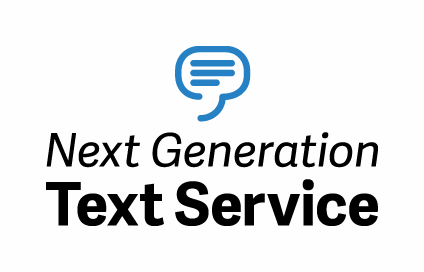Making calls using relay services
Text messages, email and social media have changed the way deaf young people communicate but in some situations phone calls are unavoidable. Here we discuss how relay services can help deaf young people communicate independently with hearing people on the phone.
Text and video relay services allow deaf people to call hearing people via an assistant. Deaf young people can use their smartphone, tablet or computer and can speak, type or sign (using video) to the relay assistant who then speaks the words to the person receiving the phone call. The assistant then types or signs the reply back to the deaf caller. Some services are more useful for British Sign Language (BSL) users, whereas others are also useful for people who don’t use BSL.
Relay services can help deaf young people become more independent. They’re particularly useful for calling organisations or institutions that can’t be contacted in other ways, for example healthcare professionals. Relay services can help make sure the deaf person understands important information correctly.
Text relay services
Text relay services work with remote assistants or operators who type out what a hearing caller says for the deaf caller to read. Deaf young people can use the Next Generation Text Service (NGTS) for free to call any organisation or individual. Those receiving the call don’t need to have NGTS installed and all phone companies in the UK work with NGTS so calls are charged at the same rate as standard telephone calls. NGTS is a convenient way for deaf young people to make important calls. It can even be used to call emergency services
There are different ways to use NGTS to make a phone call. Some people use its app called NGT Lite. They can install NGT Lite on their mobile phone, link their phone number to the app and choose how they want to communicate, for example ‘typing and reading’ or ‘speaking and reading’. They can then call the number they want to reach by including the NGTS 18001 prefix before dialling the number. Once the call is connected the hearing person receives a message that the deaf caller uses text relay and the relay assistant can guide the hearing person through the call if necessary. The NGT Lite app uses a very small amount of data (if you’re not connected to WiFi) and disconnects automatically when it’s not used. Users can also install a desktop version so their calls will be shown on a bigger screen.

"I use NGTS on my mobile phone and computer depending on where I am. I text NGTS and the operator reads out my text to the other person and texts their reply back to me. I use NGTS for things like making bookings, getting takeaways or calling my GP. It helps me access the information I need and it gives me the confidence and independence to do it myself, without other people having to ring up for me."
Emily (19) is profoundly deaf and wears hearing aids.
Video relay services
VRS provides BSL interpreters as relay assistants. These are paid-for services and organisations can sign up to a VRS of their choice. This means the organisation pays and the service is free for the deaf person to use. It does use some data if the caller isn’t on WiFi. Some VRS services, such as SignLive and SignVideo, also offer VRS packages for personal use so deaf young people can call any organisation or individual using an interpreter, even if organisations haven’t paid for VRS. However, the deaf caller would need to pay for this themselves.
A commonly used VRS is SignVideo. Many banks, telecommunication companies and public services have signed up to SignVideo. Deaf young people can install the free SignVideo app on their smartphone and find the organisation they want to call in the app’s directory or on SignVideo’s website. The deaf caller is then connected to a BSL interpreter who will appear on the screen. The interpreter will relay what the deaf person is signing to the organisation receiving the call and sign back their spoken reply.

"I used SignVideo to contact the Department for Work and Pensions (DWP) about my Disability Living Allowance (DLA). It was super easy and quick to use! All I did was click on the link on the DWP website and then spoke to an adviser through a BSL interpreter on the screen. It meant that I didn’t have to rely on anyone else and my DLA was sorted out in five minutes on Video Relay Services (VRS) rather than taking weeks over email!"
Jake (23) is severely to profoundly deaf and wears hearing aids.
Examples of other VRS include InterpretersLive, SignLive and InterpreterNow. Deaf young people can use InterpreterNow to call our Freephone Helpline, SignHealth, NHS 111 or other organisations who have signed up to InterpreterNow. They need to install the free InterpreterNow app, create an account and then call the organisation they’re looking for. Similar to SignVideo, an interpreter appears on their screen and relays the conversation.
To use VRS deaf young people need to have a smartphone with a video camera and be connected to the internet. They could also call using a laptop, computer or tablet.
All calls handled by relay assistants are confidential and personal information is relayed securely. You can find out more about these services at:
www.ngts.org.uk
www.signvideo.co.uk
www.interpreternow.co.uk
